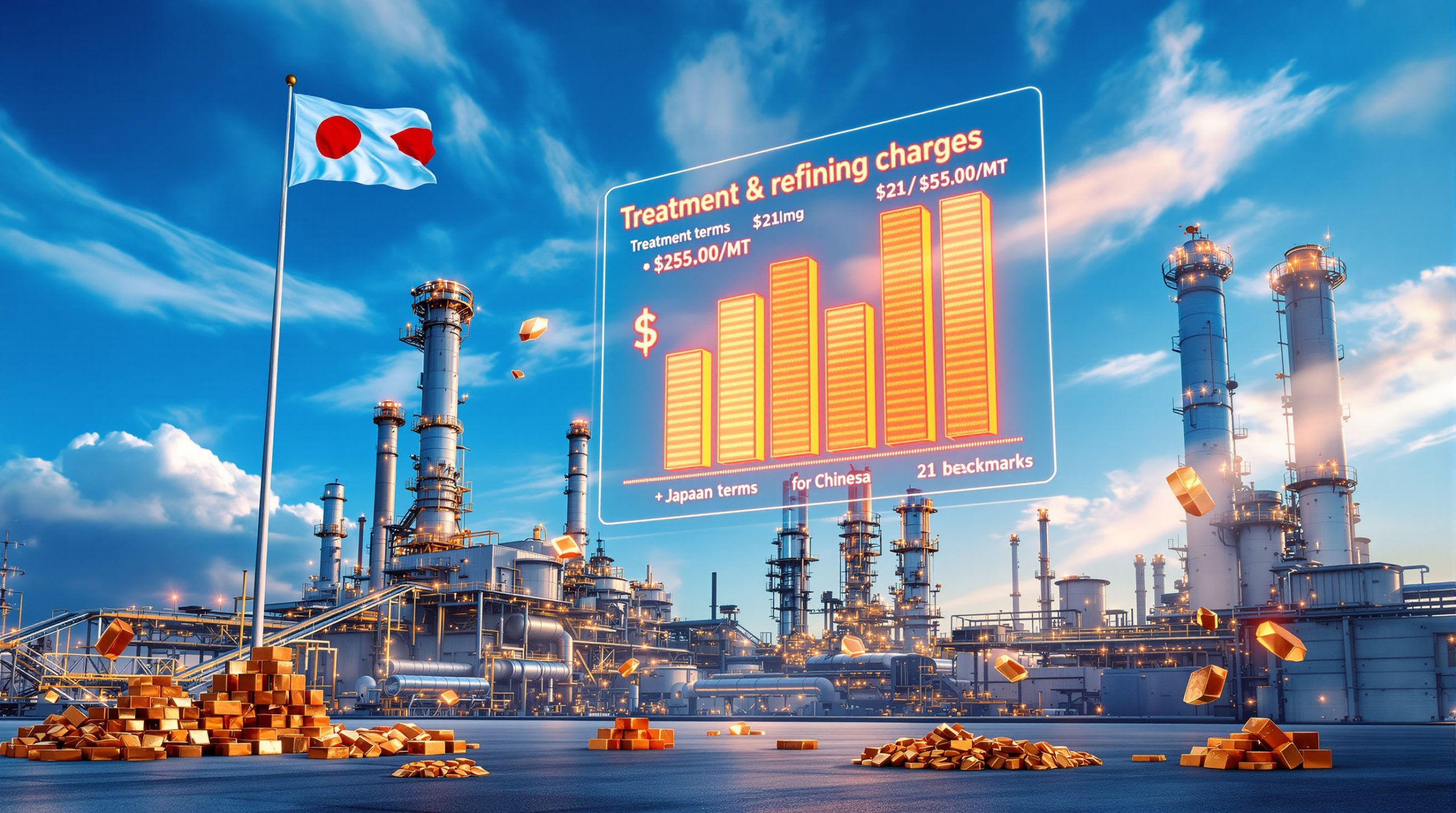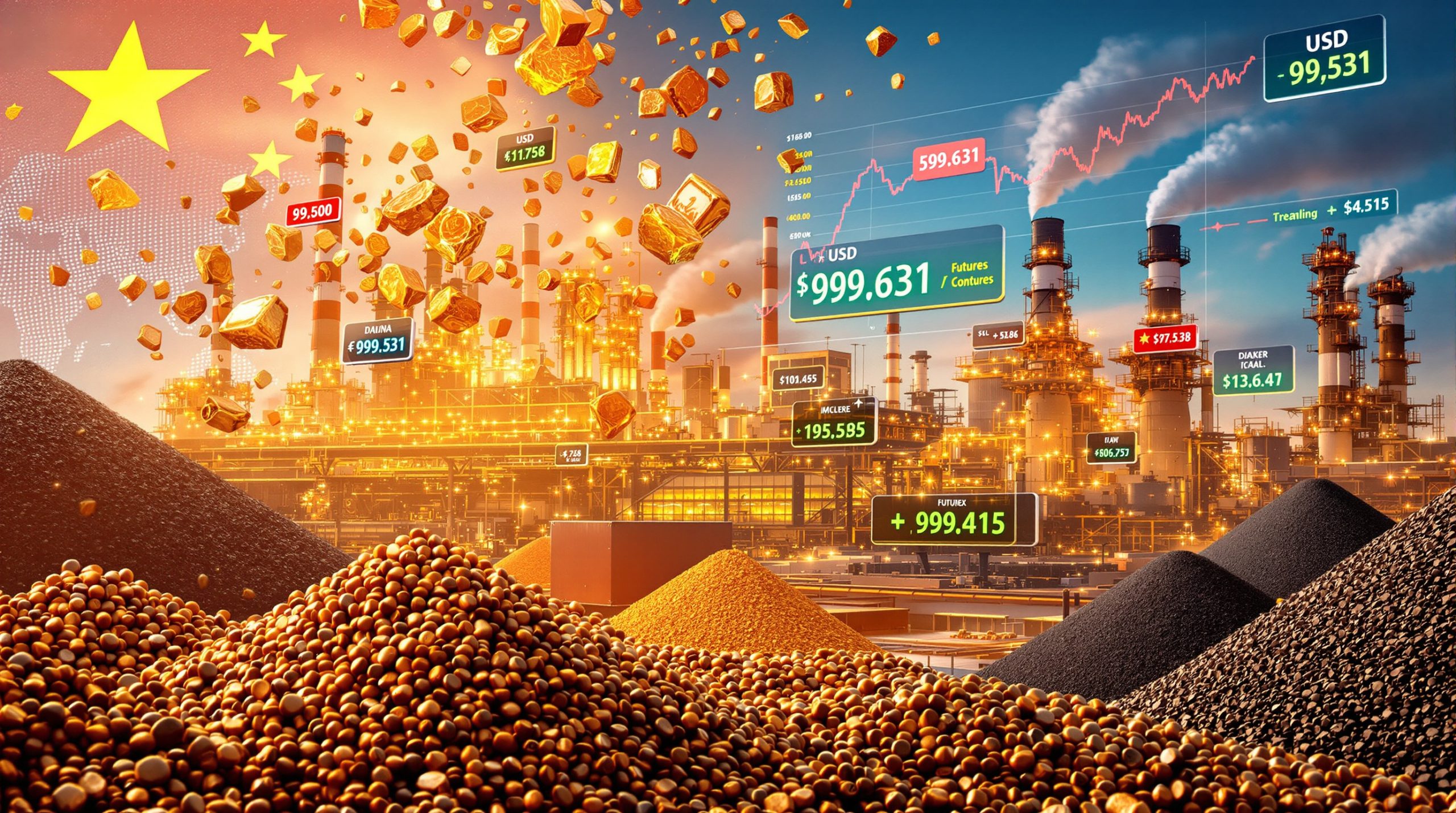What Is Driving the Energy Transition in Mining?
The global mining industry stands at a critical inflection point as the world pivots toward cleaner energy solutions. This transformation is not merely a trend but a fundamental restructuring of mineral demand patterns that will reshape how will the energy transition impact the economics of mining for decades to come. Understanding the drivers behind this shift is essential for stakeholders across the mining value chain.
The Shift to Renewable Energy Technologies
Clean energy technologies require significantly more minerals than their conventional counterparts. According to the International Energy Agency (IEA), electric vehicles need six times more mineral inputs than conventional cars. This includes large quantities of copper for wiring, lithium and cobalt for batteries, and rare earth elements for motors.
Similarly, onshore wind plants require nine times more mineral resources than gas-fired power plants. A single wind turbine can contain up to three tons of copper and substantial amounts of zinc, manganese, and rare earth elements. Solar photovoltaic installations demand large quantities of silicon, silver, copper, and increasingly, bifacial technologies that boost efficiency but require additional materials.
The mineral intensity of the energy transition extends across multiple technologies:
- Battery storage systems require lithium, nickel, cobalt, manganese, and graphite
- Electric vehicle components need rare earth elements for motors and aluminum for lightweight construction
- Grid infrastructure expansion demands massive amounts of copper, aluminum, and steel
As these technologies scale up to meet global climate targets, their mineral requirements create unprecedented demand pressure on mining operations worldwide.
Global Climate Policies and Industry Commitments
International agreements like the Paris Climate Accord have catalyzed national policies targeting carbon neutrality. Over 130 countries have established net-zero emissions targets, with most aiming for 2050 deadlines. These commitments are driving regulatory frameworks that accelerate the deployment of mineral-intensive clean energy technologies.
Mining companies themselves face increasing pressure from investors, customers, and communities to reduce their carbon footprints. Major miners including Rio Tinto, BHP, and Anglo American have announced ambitious decarbonisation in mining targets, often aligned with science-based frameworks. This dual pressure—to produce more critical minerals while reducing operational emissions—creates both challenges and opportunities.
Regulatory frameworks are evolving rapidly to support clean energy adoption. Carbon pricing mechanisms, clean electricity standards, and vehicle emission regulations all indirectly boost demand for energy transition minerals. Meanwhile, sustainability reporting requirements and taxonomies are shaping investment flows toward responsibly sourced materials.
How Is Mineral Demand Changing Due to the Energy Transition?
The energy transition is dramatically reshaping mineral demand patterns, creating unprecedented growth for some commodities while potentially accelerating the decline of others.
Critical Minerals Experiencing Unprecedented Demand
The World Economic Forum projects that demand for graphite, lithium, and cobalt could increase by nearly 500% by 2050 to meet clean energy needs. This growth trajectory far exceeds anything seen in recent mining history, even during China's infrastructure boom of the early 2000s.
Lithium, nickel, cobalt, manganese, and graphite have become the backbone of the battery revolution. Each plays a crucial role in battery performance:
- Lithium enables high energy density and lightweight characteristics
- Nickel improves energy density and extends range in electric vehicles
- Cobalt ensures battery stability and longevity
- Manganese enhances thermal stability
- Graphite forms the battery anode material, with synthetic graphite competing with natural sources
Rare earth minerals, particularly neodymium and dysprosium, are essential for the permanent magnets used in wind turbines and electric vehicle motors. Despite their name, rare earths aren't particularly rare geologically, but economically viable concentrations are limited and processing presents environmental challenges.
Copper and aluminum demand is rising substantially due to electrification requirements. An electric vehicle contains up to four times more copper than a conventional vehicle, while grid modernization requires massive conductor upgrades to handle renewable energy integration.
Supply-Demand Imbalance Challenges
The mining industry faces significant challenges in meeting this surge in demand. New mining projects take approximately 16 years on average from discovery to production—a timeline misaligned with the rapid acceleration of clean energy deployment. This lag creates potential critical mineral shortages that could inflate technology costs and slow the energy transition.
Declining mineral grades compound the challenge. Over the past century, average copper ore grades have fallen from about 4% to less than 1%, requiring substantially more rock to be processed for the same metal output. This trend increases energy requirements, water usage, and waste generation per unit of production.
Current recycling systems remain insufficient to close the gap. Only 5-10% of lithium-ion batteries are recycled globally, despite containing valuable materials. While recycling rates for traditional metals like copper exceed 50% in developed countries, building effective collection and processing systems for energy transition minerals presents technical and logistical hurdles.
The resulting supply constraints threaten to create price volatility and potentially inflate energy transition technology costs. According to McKinsey research, raw material constraints could add 15-25% to battery costs by 2030 if new mining capacity and recycling infrastructure aren't adequately developed.
What Geopolitical Shifts Are Occurring in Mining Economics?
The energy transition is triggering significant geopolitical realignments in mineral resources, potentially creating new dependencies and vulnerabilities.
Geographic Concentration of Critical Resources
Critical minerals demonstrate alarming geographic concentration. The Democratic Republic of Congo (DRC) accounts for approximately 70% of global cobalt production, creating a supply vulnerability for battery manufacturers. Meanwhile, lithium reserves are heavily concentrated in the "Lithium Triangle" (Chile, Argentina, Bolivia) and Australia, with China dominating processing capacity.
Other critical minerals show similar patterns:
- Chile produces 28% of global copper
- Indonesia accounts for 37% of nickel
- China processes 87% of rare earth elements
- Guinea holds 22% of global bauxite reserves
This concentration creates supply chain vulnerabilities that differ markedly from the more diversified production of traditional energy sources like coal and oil. The resulting trade dependencies shape emerging geopolitical relationships and security concerns.
Emerging Resource Nationalism
Resource-rich nations increasingly recognize the strategic value of their mineral endowments in the energy transition. Indonesia's ban on raw nickel exports, implemented in 2020, exemplifies this trend. The policy successfully spurred domestic processing investment, with Indonesian nickel refineries expanding capacity by over 400% since implementation.
Similar resource nationalism is emerging worldwide:
- Zimbabwe banned lithium ore exports to encourage domestic refining
- Chile is restructuring its lithium industry to ensure greater state participation
- The DRC is reviewing mining contracts to capture more value from cobalt production
- Mexico nationalized lithium resources through constitutional amendment
These policies potentially herald a commodity supercycle that benefits resource-rich nations while challenging importing countries and downstream manufacturers. The economic balance of power may shift from fossil fuel producers to countries with critical mineral reserves, particularly those that develop processing capabilities.
How Are Mining Economics Changing?
The mining industry faces fundamental economic shifts that will reshape investment patterns and operational strategies.
Rising Capital and Operational Costs
Mining economics face upward cost pressures across multiple dimensions. As mineral grades decline, significantly more energy is required for extraction and processing per unit of output. The energy intensity of copper production has increased by approximately 35% in the past decade due to lower grades and more complex ores.
Initial capital expenditures for new projects are increasing substantially. The average capital intensity for new copper mines has risen from $8,000-$10,000 per annual tonne of production capacity to $15,000-$20,000 over the past decade. This escalation reflects more challenging geology, stricter environmental requirements, and infrastructure needs in remote locations.
Higher extraction costs affect project economics across the board:
- Deep underground mines require more extensive ventilation and ground support
- Complex mineralogy increases processing costs
- Water scarcity drives investments in desalination and water recycling
- Carbon reduction targets necessitate renewable energy integration
These rising costs demand technological innovation to maintain economic viability. Without productivity improvements, many critical mineral deposits will remain uneconomic despite growing demand.
New Revenue Opportunities
Despite cost challenges, the energy transition creates substantial revenue opportunities for mining companies. Premium pricing for responsibly sourced minerals is emerging as manufacturers seek materials with lower environmental and social impacts. BMW and Tesla have established long-term contracts for low-carbon aluminum at premium prices, creating incentives for cleaner production.
Vertical integration into refining and processing offers another avenue for value capture. By moving downstream, mining companies can access higher margins and establish closer relationships with end-users in battery and clean technology supply chains.
Diversification into energy transition minerals represents a strategic pivot for traditional mining companies. Major diversified miners like Rio Tinto and BHP are actively expanding their copper clean energy investments while developing lithium assets. This rebalancing helps offset potential declines in coal and other fossil fuel-related commodities.
The potential for higher margins exists particularly in critical mineral segments where supply constraints create pricing power. Unlike bulk commodities that behave more like perfect competition markets, specialized minerals with few substitutes can command premium pricing during supply shortages.
What Environmental and Social Factors Are Reshaping Mining Economics?
Environmental and social considerations increasingly influence the economics of mining operations, creating both constraints and opportunities.
Environmental Impact Considerations
Environmental factors are becoming central to mining economics. Research indicates that 9% of global tailings storage facilities are located within protected areas or key biodiversity zones, creating significant ecological risks. These facilities face growing regulatory scrutiny and potential closure or remediation requirements.
Water usage concerns are particularly acute in lithium extraction. Conventional evaporation pond methods in Chile's Atacama Desert consume approximately 500,000 liters of water per tonne of lithium produced, creating conflicts with agricultural and community needs in water-stressed regions.
Energy-intensive processing requirements for many critical minerals contribute to their environmental footprint. Aluminum smelting consumes up to 14 MWh of electricity per tonne produced, while nickel refining requires substantial energy inputs. These energy needs create both challenges and opportunities for integrating renewable power.
The carbon footprint of mining operations faces increasing scrutiny from investors, customers, and regulators. Scope 1 and 2 emissions from mining operations account for approximately 4-7% of global greenhouse gas emissions, creating pressure for operational changes. Growing attention to Scope 3 emissions further complicates the picture for miners producing fossil fuels.
Social License to Operate
Community expectations for sustainable practices have evolved dramatically. The social license to operate—community acceptance and approval of mining projects—has become a critical business asset that directly impacts project economics through approvals, timelines, and operational constraints.
Indigenous rights considerations have gained prominence in resource development. Free, Prior and Informed Consent (FPIC) principles are increasingly incorporated into regulatory frameworks and lender requirements, necessitating more comprehensive engagement processes that affect project timelines and costs.
Labor standards and human rights in supply chains face heightened scrutiny. Automotive and electronics manufacturers increasingly demand assurances regarding ethical sourcing, particularly for cobalt from the DRC and other conflict-affected regions. This scrutiny creates compliance costs but also opportunities for premium pricing for responsibly sourced materials.
Fair distribution of economic benefits to local communities has become essential for project success. Modern community agreements often include local procurement requirements, skills development programs, and revenue-sharing mechanisms that affect project economics while potentially reducing social risk.
How Are Governments Responding to Mining's Role in Energy Transition?
Governments worldwide are implementing policies to secure critical mineral supplies while balancing environmental protection and economic development.
Policy Incentives and Strategic Investments
Governments are deploying substantial subsidies and tax breaks to reduce import reliance on critical minerals. The United States' Inflation Reduction Act includes production tax credits for domestic critical minerals, while the European Union's Critical Raw Materials Act aims to boost European processing capacity through financial incentives.
Critical mineral strategies are being developed by major economies to coordinate policy responses:
- Australia's Critical Minerals Strategy targets $2 billion in co-investments
- Canada's Critical Minerals Strategy emphasizes its clean energy advantages
- Japan's economic security legislation designates critical materials for support
- The UK's Critical Minerals Intelligence Centre maps supply vulnerabilities
Public-private partnerships for resource development are expanding, with government equity participation becoming more common in strategic projects. These arrangements help mitigate investment risks while ensuring national interests are protected.
Government funding for research and development has increased substantially, focusing on processing technologies, substitution possibilities, and recycling methods. The US Department of Energy's Critical Materials Institute exemplifies this approach, bringing together researchers, industry partners, and government laboratories to address supply challenges.
Regulatory Frameworks
Streamlined permitting for strategic mineral projects is emerging in several jurisdictions. The European Union's Critical Raw Materials Act includes provisions to accelerate approvals for designated strategic projects, while Australia has established "strategic status" designations that prioritize critical mineral developments.
Environmental standards are evolving to balance protection with development needs. Rather than weakening protections, many jurisdictions are creating more predictable and science-based frameworks that reduce uncertainty while maintaining safeguards. These frameworks increasingly incorporate climate considerations alongside traditional environmental impacts.
Trade policies addressing critical mineral security have proliferated, with more countries implementing export restrictions, domestic content requirements, and strategic stockpiling. These measures reshape global supply chains but risk fragmenting markets and raising costs.
International cooperation on responsible sourcing standards is developing through initiatives like the Extractive Industries Transparency Initiative and the OECD's guidance on minerals sourcing. These frameworks create common expectations that reduce compliance complexity for mining companies operating globally.
What Technological Innovations Are Affecting Mining Economics?
Technological innovation offers pathways to address many of the economic, environmental, and social challenges facing mining in the energy transition era.
Advanced Extraction and Processing Methods
New technologies to improve recovery rates are transforming project economics. Developments in flotation, leaching, and separation technologies can increase mineral recovery by 5-15%, substantially improving resource utilization and project returns. Bioleaching methods, which use bacteria to extract metals from low-grade ores, show particular promise for copper and nickel.
Energy-efficient processing techniques are reducing operational costs and carbon footprints. High-pressure grinding rolls consume approximately 30% less energy than conventional grinding circuits, while electrowinning innovations reduce electricity consumption in copper refineries.
Automation is reducing operational costs across mining value chains. Autonomous haulage systems improve truck utilization by 15-20% while reducing fuel consumption by 10-15%. Remote operations centers allow skilled personnel to monitor multiple sites, improving safety and efficiency simultaneously.
Digital twins in mining are optimizing resource utilization through real-time monitoring and advanced analytics. Machine learning algorithms applied to drill core data can improve resource estimation accuracy by 15-20%, potentially reducing cut-off grades and expanding economically viable reserves.
Circular Economy Solutions
Recycling infrastructure development is accelerating to reduce primary extraction pressures. Specialized facilities for battery recycling are expanding globally, with China leading capacity development. Innovative hydrometallurgical processes can recover over 95% of cobalt and nickel and 80% of lithium from spent batteries.
Urban mining from electronic waste represents an increasingly important secondary source of critical minerals. A tonne of smartphone circuit boards contains approximately 130 kg of copper, 3 kg of silver, and 340 grams of gold—concentrations far exceeding those in natural ores.
Material substitution research offers pathways to reduce dependence on constrained minerals. Sodium-ion batteries potentially reduce lithium requirements, while advanced motor designs can decrease rare earth content by 20-40%. These innovations may reshape demand patterns for specific minerals.
Closed-loop systems for water and waste management reduce environmental impacts while potentially lowering operational costs. Paste tailings technology reduces water consumption by 50-60% compared to conventional tailings impoundments, while also improving stability and reducing failure risks.
How Can Mining Companies Navigate the Energy Transition Successfully?
Mining companies face complex strategic choices as they position themselves for the evolving energy transition landscape.
Strategic Portfolio Management
Diversification into critical minerals has become a strategic imperative for many mining companies. Companies like BHP and Rio Tinto are actively expanding their copper and nickel exposure while developing capabilities in lithium and rare earths. This diversification helps offset potential declines in fossil fuel-related commodities.
Divesting from carbon-intensive assets is accelerating as companies consider future demand scenarios and investor preferences. Anglo American's thermal coal spinoff (Thungela Resources) exemplifies this approach, allowing the parent company to focus capital on transition-aligned minerals while creating a specialized coal entity.
Strategic acquisitions in the energy transition space are reshaping corporate portfolios. Rio Tinto's $825 million acquisition of the Rincon lithium project in Argentina and BHP's attempted acquisition of copper producer OZ Minerals demonstrate major miners' willingness to pay premiums for quality transition mineral assets.
Long-term planning for changing demand patterns has become essential for capital allocation decisions. Mining companies are extending their planning horizons and incorporating multiple energy transition scenarios to test investment resilience across possible futures.
Sustainability Integration
Renewable energy adoption at mining sites is accelerating rapidly. Over 40 mining companies have committed to the International Council on Mining and Metals' goal of net-zero emissions by 2050, driving substantial investments in on-site solar, wind, and battery storage. These investments often deliver attractive returns while reducing carbon footprints.
Electrification of mining equipment offers pathways
Ready to Capitalise on the Next Mineral Discovery?
Get real-time alerts on significant ASX mineral discoveries with Discovery Alert's proprietary Discovery IQ model, turning complex exploration data into actionable investment insights. Understand why major mineral discoveries can lead to substantial market returns by exploring Discovery Alert's dedicated discoveries page and start your 30-day free trial today.




